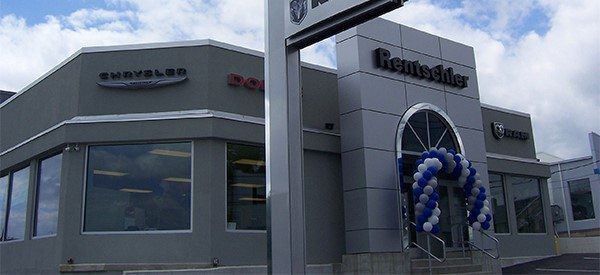Emphasize only the cars you want to sell now, reallocate your digital media spend and refine your search terms.
BY TIM O’ROURKE
Differentiating your dealership from its local competitors is more challenging than ever. Car buyers are bombarded at every turn by auto billboards and targeted display ads on their smart phones. Plus, dealers are approached by a plethora of digital marketing vendors that may be selling cookie-cutter strategies that focus on lead quantity over quality and don’t offer a real competitive edge. Increased website traffic won’t automatically deliver qualified leads that are likelier to become sales – and this is what really matters to dealers.
The dealership I will discuss in this article, Rentschler Chrysler Jeep Dodge of Slatington, Pa., wrestled with the issue of quantity vs. quality in online leads before pulling the plug on its volume-based strategy. Following are a few of the strategies this dealership used to drive truly motivated buyers to its website, and in turn transform a greater proportion of its online traffic to qualified leads.
Emphasize Models You Want To Move
The first step any dealership should take in creating a quality-focused lead generation strategy is to identify the core inventory it most wants to sell now – your most popular makes and models. Dealers don’t have unlimited resources to spend on digital advertising, which means they need to decide which brands, makes and models they most want to sell on a monthly and quarterly basis, and which vehicles won’t be featured. These decisions could be based on the dealership inventory, special promotions or manufacturer incentives.
Many dealers make a big mistake in using an underfunded digital marketing budget to cast a wide net. Promoting everything on your lot with a one-size-fits-all approach only dilutes your campaign’s effectiveness. I’ve found that 10 percent to 30 percent of dealer spend on digital marketing is typically wasted, usually because dealers try to promote too much inventory over too broad a geographic area.
If your goal is to reel in customers who are looking to buy, you need to be selective, identify inventory you want to move now, align that inventory with appropriate keywords, then create and test ads that focus on those specific terms.
Qualifying Your Customers
Knowing the difference between a browser and a buyer is of paramount importance. It can be tricky to intuit buyers’ intent from their web searches alone, but you can learn a lot by spending time “under the hood” of your own website’s analytics.
Take a look at how much time people are spending on your website, and whether they are viewing a number of pages and if so which ones. Examine bounce and conversion rates to judge how engaged your customers are. Most importantly, you want to tie those insights back to the media properties on which your ads appear. Which are sending you the most engaged customers – those most likely to buy?
You can use this knowledge to commit more funds to those media that are having the greatest impact by generating truly engaged customers, who tend to be better sales leads. Success shouldn’t be measured in web traffic alone.
Another way dealers can refine their leads is to analyze where engaged customers come from geographically. A dealer who is attracting customers from an 80-mile radius might conclude that, since he operates in a metropolitan area, a focus on a 20-mile radius will produce better results without wasting marketing spend.
 Ads Need Granular Search Terms
Ads Need Granular Search Terms
Once a dealer has identified target inventory and key customers, and how best to reach those customers, staying in front of them with relevant messages is critical. According to Google, advertisers should strive to achieve at least 50 percent share of “voice,” meaning your ad is one of the three appearing in a customer’s search half the time or more. To achieve this, you’ll need to focus on relevancy. How can you build more relevant ads?
Specificity is key. While many dealers assume that creating an advertisement that fits a broad range of search scenarios – for example, investing in terms like “Jeep Cherokee Allentown” – will yield more traffic and better results, I’ve found the opposite to be true. A dealer who invests in “2015 Jeep Cherokee Lease” will almost always receive better ad positioning. This is because Google favors the ads that best reflect consumers’ actual searches.
While your message may appear before a smaller group of prospects, those prospects are likelier to be searching specifically for the inventory and programs your dealership offers, making them far more qualified leads.
Tailoring Ads For Multiple Devices
Another major mistake I have seen dealers make is catering only to consumers who search on their desktop or laptop computers, at the expense of smartphones and tablets. If you aren’t targeting customers across all devices, you’ll be left behind. According to AutoTrader.com’s “2015 Automotive Buyer Influence Study,” 42 percent of 2015 car buyers used multiple devices to shop, up from 24 percent in 2013. And, 65 percent of the people who use a smartphone in their car search do so while they’re actually visiting a dealership.
Catering to the mobile shopper requires more than a mobile-optimized website. If consumers are searching via their mobile phones, chances are they already have narrowed their search to specific makes and models and now are hunting for deals. Ensure your dealership is reaching these customers as they make purchase decisions by including a strong call to action that utilizes specific, relevant keywords.
Leverage Manufacturer Programs
Tapping manufacturer resources for your digital marketing strategy is smart business, because a plethora of funding and campaign materials is available to support your efforts. Manufacturers offer everything from pre-built, optimized landing pages to customizable digital ads that are centered on specific and feasible incentives. Dealers who leverage these assets can capture the attention of a broader base of customers who are specifically looking to buy during the near-term timeframe.
A recent study conducted by Borrell Associates and our team found that 90 percent of dealers are buying online advertising using manufacturers’ co-op funds. Those dealers cite SEO/SEM (86 percent), display advertising (73 percent) and mobile media (57 percent) as their three most effective digital strategies.
While collaborating with manufacturers to boost lead generation performance is a no-brainer, many dealers don’t realize they can work with manufacturers on digital video advertising and promotions in order to drive more qualified leads. Digital video helps you reach customers farther down the buying path, and Business Insider reports that video ads boast a higher click-through rate than any other digital ad format. Nearly half of consumers report visiting a local retailer after watching a video ad online, according to Google. Meanwhile, promotions help dealers reach consumers with special incentives during the times they are most likely to buy.
Using the approaches I’ve reviewed in this article, Rentschler saw a 15 percent increase in combined conversion rates and a 22 percent decrease in bounce rates over its prior quarter. In addition, the dealership enjoyed a 30 percent increase in its average form submission rate and a 4 percent gain in average time spent on its website. Although website traffic volume declined slightly, the visitors tended to be more qualified, resulting in a higher conversion rate.








